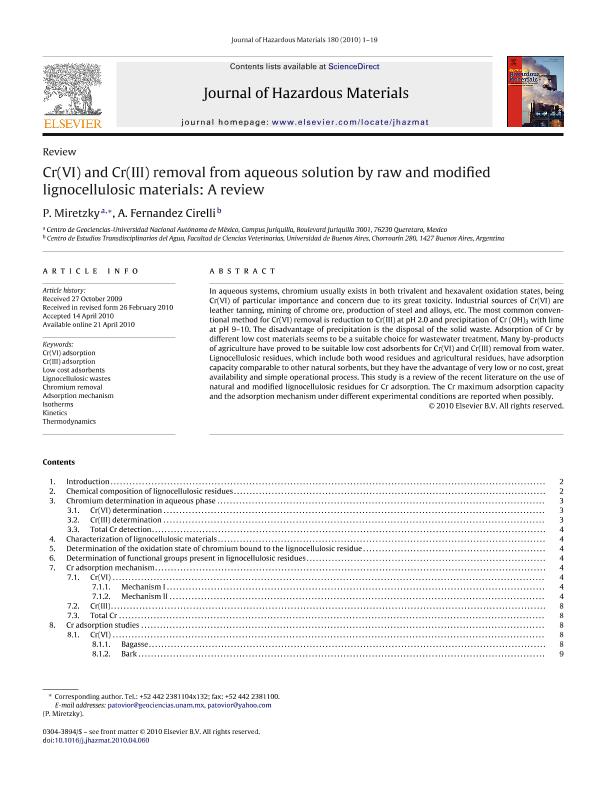Artículo
Cr(VI) and Cr(III) removal from aqueous solution by raw and modified lignocellulosic materials: a review
Fecha de publicación:
08/2010
Editorial:
Elsevier Science
Revista:
Journal Of Hazardous Materials
ISSN:
0304-3894
Idioma:
Inglés
Tipo de recurso:
Artículo publicado
Clasificación temática:
Resumen
In aqueous systems, chromium usually exists in both trivalent and hexavalent oxidation states, being Cr(VI) of particular importance and concern due to its great toxicity. Industrial sources of Cr(VI) are leather tanning, mining of chrome ore, production of steel and alloys, etc. The most common conventional method for Cr(VI) removal is reduction to Cr(III) at pH 2.0 and precipitation of Cr (OH)3 with lime at pH 9–10. The disadvantage of precipitation is the disposal of the solid waste. Adsorption of Cr by different low cost materials seems to be a suitable choice for wastewater treatment. Many by-products of agriculture have proved to be suitable low cost adsorbents for Cr(VI) and Cr(III) removal from water. Lignocellulosic residues, which include both wood residues and agricultural residues, have adsorption capacity comparable to other natural sorbents, but they have the advantage of very low or no cost, great availability and simple operational process. This study is a review of the recent literature on the use of natural and modified lignocellulosic residues for Cr adsorption. The Cr maximum adsorption capacity and the adsorption mechanism under different experimental conditions are reported when possibly.
Archivos asociados
Licencia
Identificadores
Colecciones
Articulos(OCA PQUE. CENTENARIO)
Articulos de OFICINA DE COORDINACION ADMINISTRATIVA PQUE. CENTENARIO
Articulos de OFICINA DE COORDINACION ADMINISTRATIVA PQUE. CENTENARIO
Citación
Miretzky, Patricia; Fernandez Cirelli, Alicia; Cr(VI) and Cr(III) removal from aqueous solution by raw and modified lignocellulosic materials: a review; Elsevier Science; Journal Of Hazardous Materials; 180; 1-3; 8-2010; 1-19
Compartir
Altmétricas




